Nutrition is the core of our being- providing what is needed for our bodies to function. Studying nutrition allows us to understand how food choices impact energy and prevent illness and disease. Whether or not you plan to go into the field of nutrition, it is vital for everyone to be familiar with the basic concepts of nutrition, which contribute to our well being. This introduction to nutrition will break down how the body processes nutrition and explain how diet choice and physical activity can contribute to overall health. Take 10 minutes to read through each section, or spend an hour or two being enriched through the additional resources provided.
Table of Contents
Section One: Basic Nutrition Terms and Definitions
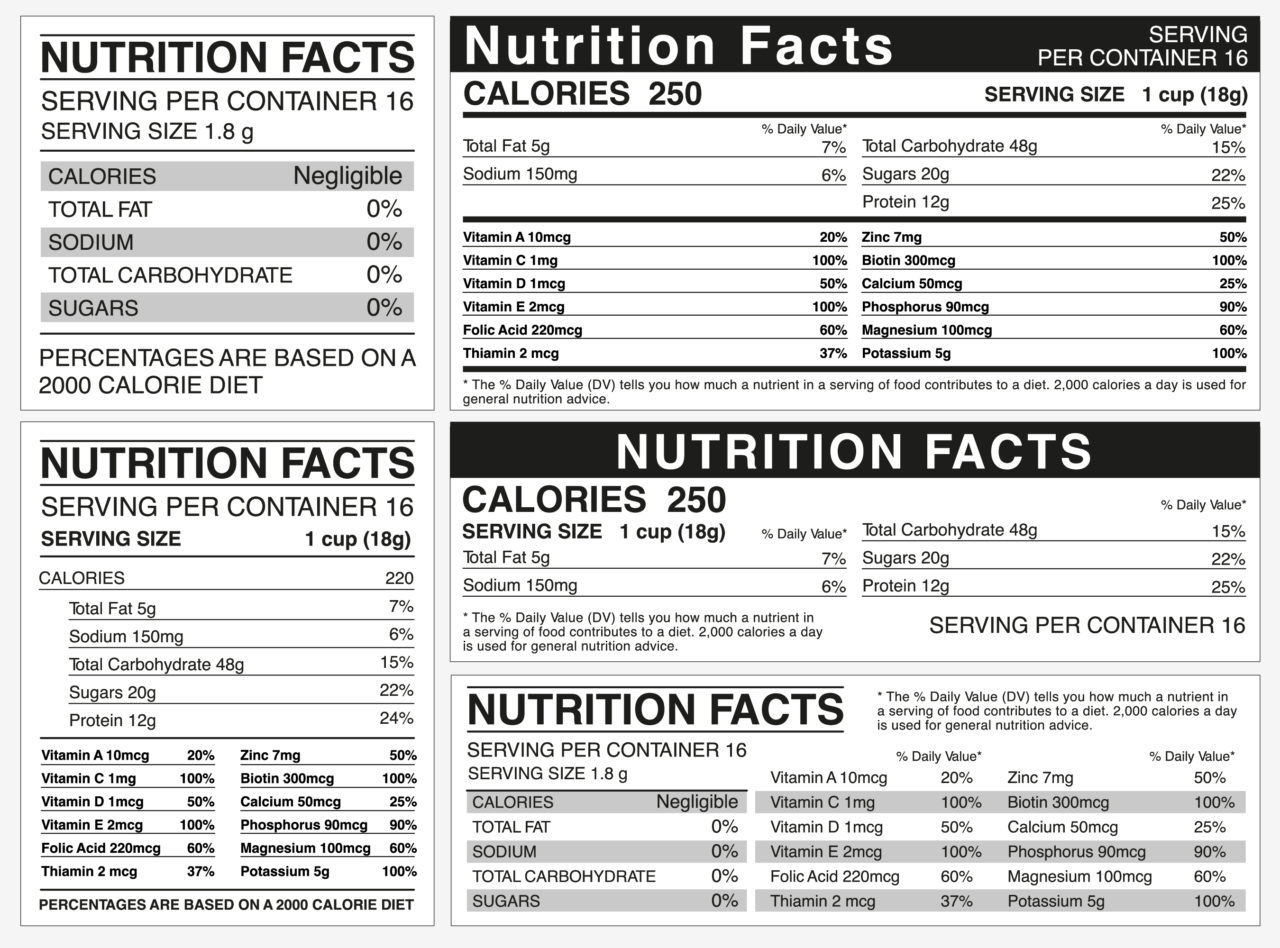
The topic of nutrition can be overwhelming, particularly in an age where the “rights” and “wrongs” of diet and exercise seem like they are constantly changing. However, there is some basic vocabulary that remains foundational to understanding nutrition.
Macronutrients: This term refers to a substance that a human body requires in large amounts. This includes food categories like fats, proteins, and carbohydrates.
Micronutrients: This term refers to a substance that a body requires in trace amounts. This includes things like microminerals (zinc, iron, selenium, etc.) and vitamins (A, C, D, B12, etc.)
Lipids: Lipids are a food component comprised of fatty acids. Lipid categories include di-, tri- and monoglycerides and phospholipids. Lipids, both added and naturally occurring, are commonly found in things like fried foods, oils, dairy, avocados, and nuts.
Amino Acid: Amino acids are a building block of life. They are a byproduct of protein digestion and breakdown in the body.
Cholesterol: Cholesterol is present in every cell in the body. The body makes all the cholesterol it needs for food digestion, hormone production and Vitamin D production. There are two types: low-density lipoproteins (LDL) and high-density lipoproteins (HDL).
Cellulose: Though humans cannot digest cellulose (from vegetables and fruit), it is our main source of insoluble dietary fiber, which is needed for nutrient absorption and defecation.
Sugar: Sugar is needed for cell function and energy storage. It can be naturally occurring or be an additive. Common forms include glucose, fructose, sucrose, maltose, galactose, and lactose.
Probiotics: Probiotics are a “friendly” bodily bacterium, which assist in many vital bodily functions (optimal metabolism, vitamin production, immune response).
Supplements: Supplements are taken to ensure that the body is getting the vital substances it needs for optimal functioning. They may include ingredients like vitamins, acids, enzymes, minerals, or herbs.
What do you think?
How do each of these terms contribute to the importance of nutrition?
Additional Resources for Basic nutrition terms and definitions
Section Two: Essential Nutrients
There are a variety of substances and elements a body needs to function optimally. It can be challenging to understand what those elements are and what their sources and functions are. To best answer some of these questions, it is helpful to study the macronutrient and the micronutrient categories.
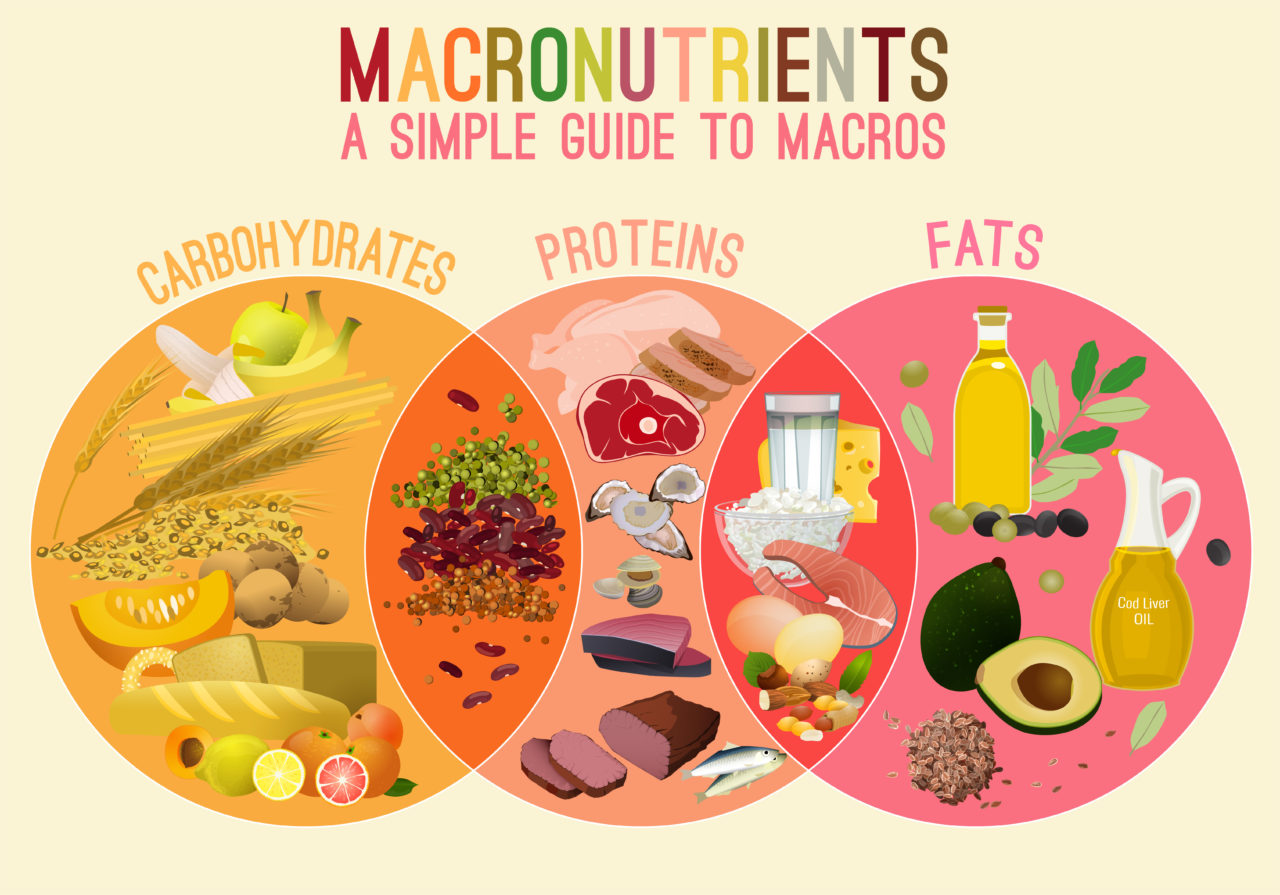
Macronutrients: The macronutrient category includes proteins, carbohydrates, fats, fiber, and water. Fiber is a subtype of the carbohydrate category. Excluding water, macronutrients provide the body with the calories and energy necessary for bodily functions like growth, repair, and regulation of life processes.
– Protein: Proteins are made up of amino acids. Amino acids are integral to cell structure, as well as tissue maintenance and repair. Common sources of protein include eggs, chicken breast, oats, almonds, dairy (Greek yogurt, milk, and cheese), lean beef, quinoa, and fish.
– Carbohydrates: Carbohydrates are best known as the body’s energy source. Carbohydrates can be complex (like starch or fiber) or simple (sugar). Common carbohydrate sources include bread, milk, fruits and vegetables, and snacks with added sugar.
– Fat: Fats provide the most energy to the body. Extra fats can be stored and used for energy, as well as for steroid and hormone production. Common sources of fat (natural or additive) include fried foods, avocados, nuts, oils, dairy, and red meat.
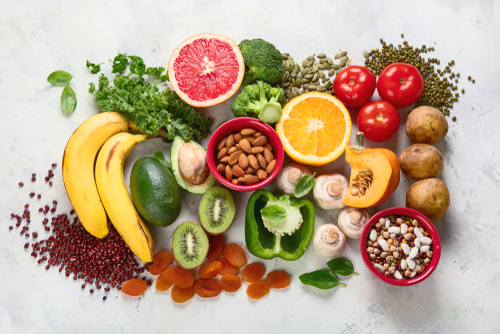
Micronutrients: There are 50+ micronutrients the body needs. Though they provide no energy to the body, they are important for a variety of necessary chemical reactions in the body. There are many sources for vitamins and minerals, including leafy fruits and vegetables, whole-grain foods, nuts, dairy, and fish.
What do you think?
Why do we need essential nutrients?
Additional Resources for essential nutrients
Section Three: Nutrition and the Human Body
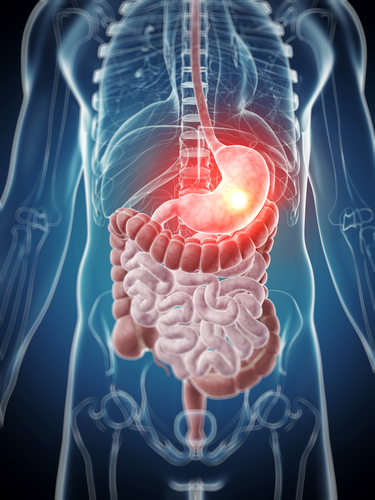
There are four steps that the human body walks through related to food consumption, use, and elimination. They are ingestion, digestion, absorption, and elimination. It is during ingestion that the human body receives the energy and calories that it needs. Digestion and absorption are the processes in which the body breaks those nutrients down into small component parts and gets them where they need to be. After these three processes occur, there are food molecules left behind that need to leave the body. These ‘indigestible wastes’ become feces, which leave the body via elimination (defecation).
Digestion: For nutrients to be absorbed by the body for energy, food must first be broken down. This happens during chemical and mechanical digestion. Mechanical digestion includes the chewing and swallowing of food; chemical digestion includes the enzymatic breakdown of food into smaller particles (small enough for absorption across cell membranes). Digestive enzymes are found in a variety of places, including saliva, the stomach, pancreatic juice, and intestinal secretions.
Absorption: During the absorption process, the broken-down particles are absorbed into the blood and delivered to cells throughout the body. Nutrient absorption takes place in the small intestine (ileum portion) via diffusion or transport proteins. Small nutrients move directly from intestinal cells into blood capillaries, while larger nutrients move into lymphatic cells and then into blood vessels.
Optimal organ function is important for both digestion and absorption. The digestive system is made up of seven major parts and three accessory organs.
| Salivary glands (mouth) | Produces saliva which breaks down food | |
| Pharynx (throat) | Passageway for air and food after swallowing | |
| Esophagus | Muscular tube that brings food to the stomach | |
| Stomach | Digestive juices in stomach breaks down food for digestion, protein and fat are digested | |
| Small intestine | Where absorption of nutrients occurs | |
| Large intestine | Water, minerals and some vitamins are reabsorbed into the blood, waste is changed from liquid to stool | |
| Rectum | Final stage of digestion where feces is stored before defecation | |
| Accessory organs | Food is metabolized, carbohydrates are broken down, sugars are converted to energy (liver, gall bladder, pancreas) |
What do you think?
What is the importance of the digestive system?
Additional Resources for nutrition and the human body
Section Four: Basics of Food Science
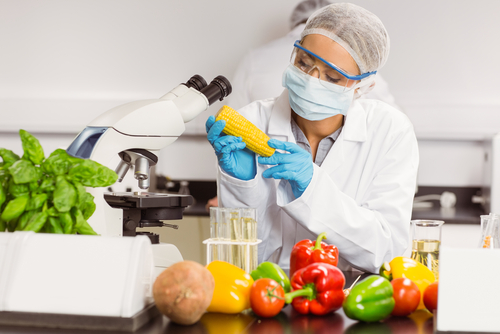
As you study nutrition, you are going to hear the words ‘food science’ often. What is food science? A simple definition is: the term used to describe the application of scientific principles to either create or help maintain a wholesome and sustaining food supply.
Some results of food science in the past include:
– Frozen food
– Canned food
– Microwaveable foods
– Snacks
– Nutritious new foods
– Milk which keeps in a refrigerator
Largely, food science leads to variety in our diets. By applying scientific knowledge to what we already know about existing foods, food science allows for the creation of quality and abundance in our food supply, as well as the creation of new foods. Food science also leads to the best use of our existing resources and the minimization of food waste.
A large part of food science is food safety. Food safety includes all the practices that are necessary to keep our food safe (the prevention of food borne illnesses). Contamination of foods can occur at any point in their journey into homes, including during production, processing, distribution, storage, and/or preparation. There are a lot of people involved in all of these processes, including you, the individual consumer, so the full scope of food safety is dependent on the joint efforts of all.
What do you think?
Why is food technology and food science important?
Additional Resources for food science
- Food Safety Fact Sheet
- U.S. Department of Agriculture Food Science and Technology
- The Future of Food TED Talk
Section Five: Food Choice and Health

The world of nutrition can be overwhelming, partly because it feels as if it is constantly changing. Eggs, meat, oils, dairy, etc. – the consumer often hears about many foods that are ‘good for you’ one day and then not the next. While this landscape can be difficult to navigate, there is no denying that the impact of diet and lifestyle on health is significant, so we must pay attention to the choices that we make.
While what constitutes a healthy diet may change over the years, there are some health effects of a poor diet that have remained true. Unhealthy eating habits have contributed to the U.S. obesity epidemic (1/3 of adults are obese and approximately 17% of children between 2-19 years are obese) and to the increase in chronic health conditions, including hypertension, type 2 diabetes, heart disease, osteoporosis, and certain types of cancer.
A healthy diet is largely about balance. According to the Dietary Guidelines for Americans, this balance should emphasize fruits, vegetables, whole grains, and fat-free or low-fat dairy products, include lean protein sources (meats, fish, etc.), be low in saturated and trans fats, cholesterol, salt, and added sugars, and stay within an individual’s daily calorie needs.
Interestingly, a healthy overall diet can also improve allergy conditions. There are a variety of foods that are thought to help fight seasonal allergies. And while certain food allergies cannot be avoided, there are a variety of foods that have anti-inflammatory properties as well.
What do you think?
How does food choice affect health?
Additional Resources for food choice and health
- Why I’m A Weekday Vegetarian TED Talk
- Healthy Eating for a Healthy Weight
- Estimated Caloric Needs per Day
Section SIX: Health and Prevention of Disease
The topic of malnutrition is an important part of the discussion of disease prevention. There are three common ways malnutrition conditions can be classified.
- Undernutrition: deficiencies in intake of energy and/or nutrients; includes wasting, stunting, and underweight
- Micronutrient-related malnutrition: Lack of necessary vitamins and minerals or micronutrient excess
- Overweight/obesity/diet-related diseases: Includes heart disease, stroke, type 2 diabetes, and some cancers
Dietary choices can significantly influence an individual’s chronic disease risk. Common diet-related disease(s) include elevated risk of heart disease, stroke, and type 2 diabetes. These diseases are known as cardiometabolic diseases. In 2012, researchers found that nearly half of the deaths in the U.S. related to one of these three conditions were associated with suboptimal eating habits. This included both the inadequate consumption of healthy living foods and the overconsumption of poor diet choices.
Heart disease, which is the leading cause of death in the U.S., is most commonly associated with excess consumption of sodium, as well as not eating enough nuts and seeds, omega-3 fats, fruits, vegetables, whole grains, and polysaturated fats. Too much processed meat, sugar beverages, and unprocessed red meat are also known to raise the risk of heart disease, stroke, and type 2 diabetes.
Though these chronic disease conditions can be overwhelming, research does show that better diet choices lead to a reduction in these rates. And though diet changes alone can’t prevent all of these conditions, improved dietary habits can quickly and positively cause real change.
What do you think?
How can food play a role in disease prevention?
Additional Resources for health and prevention of disease
Section Seven: Nutrition and Physical Activity
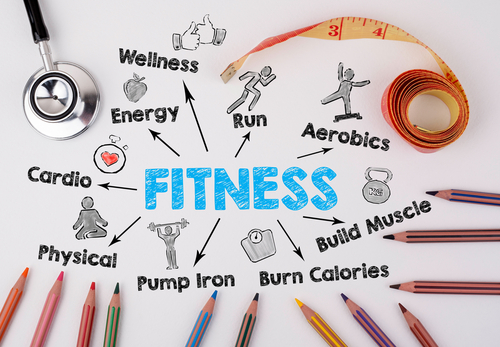
For all of the importance that diet is given as it relates to overall health and well-being, most understand that physical activity is an integral part of a healthy body too. However, while many focus on how physical activity impacts health, the topic of nutritional requirements for physical activity can slip to the background. We need to be active to live well, but we also need to eat well to be active.
What are the basics of the relationship between food intake and physical abilities? Can we appropriate more importance to one type of food or another? As you’ll recall, we’ve already discussed that food is fuel. However, when one is taking on more than the ‘normal’ amount of physical activity, they may find that their caloric/energy needs change. The nutritional requirements for physical activity are going to vary from person to person, just as average caloric intake varies. But all who choose to be physically active need to consider their intake of vitamins and minerals, water (or other hydrating sources) and the variety of the foods that they eat.
Dietary intake is often split into three macronutrient categories: proteins, carbohydrates, and fats. Carbohydrates are essential for fuel and body recovery, protein promotes muscle growth and repair, and fats are essential for blood clotting, muscle movement, and fighting inflammation. As physical activity increases, carbohydrate needs are usually about 50+% of intake, protein needs range between 12-15% and <30% of intake should come from fats. Of these different general percentages, fats should be coming from healthy fat sources, proteins should be lean, and carbohydrates should be whole-grain varieties and fruits.
What do you think?
How do physical activity and nutrition work together for healthy living?
Additional Resources for nutrition and physical activity
Section Eight: Nutrition Tools
The internet has become an excellent place to do research. However, the sheer volumes of information and resources can also be overwhelming and potentially dangerous. As one studies the nuances of nutrition, it is important to decide which sources and standards and guidelines that they are going to trust. As you dig in, consider engaging with, learning from, and utilizing these trusted sources.
Nutrition.gov: Championed as a U.S. Department of Agriculture (USDA) sponsored website, nutrition.gov has credible information related to all types of healthful situations and choices. You can find information based on age, health conditions, weight, goals, food science, and safety and food shopping and preparation. There are a variety of online tools you can utilize as well (BMI calculator, portion control, food and nutrition apps, etc).
National Heart, Lung and Blood Institute (NHLBI): This organization has a variety of information and tools to help families and communities better understand nutrition and the impacts it has on weight and health. There are many standards and guidelines and online tools that are specific to parenting young children and leading them well in this area.
Food and Drug Administration (FDA) Center for Food Safety and Applied Nutrition: The FDA food site is extremely comprehensive. You can find information on nearly any food topic – food safety, diet, nutrition, governmental nutrition policies, healthy living, recalls and outbreaks, health management, etc.
What do you think?
Which nutrition tools will you use?
Additional Resources for nutrition tools
Section Nine: Life Cycle Nutrition Needs
Dietary needs change constantly throughout one’s life. Even without the nuances of exercise or physical demands, most stages of life have different nutritional needs and/or considerations.
Infancy & Childhood: Requirements for water, fatty acids, macro and micronutrients are much higher (per kilogram) during these stages of life. The rapid growth that occurs in these years requires protein, calories, and fat to be sustained. In infancy, average daily caloric needs are about 100 cals/kg, 4-6 months needs are about 83 cals/kg, and from 1-3 years, needs are about 82 cals/kg. This number continues to decline until it reaches normal adult needs (about 25-30 cals/kg).
Adolescents: Currently, the Institute of Medicine (IOM) recommends that adolescents have higher intakes of protein and energy. Vitamin and mineral needs are similar to those of adulthood. Menstruating females do have higher iron needs, while males require more of some vitamins and minerals. Physical activity, like organized sports, can significantly affect caloric needs during this stage.
Adulthood: The average adult needs about 25-30 cal/kg of nutritional intake. Micronutrient needs are similar to those of adolescence. Of note is pregnancy for the female population. To support the infant, caloric needs are higher, as well as the necessity of appropriate amounts of folic acid and iron. Many foods are to be avoided as well, not because of their nutritive properties, but because of their potential impact on the growing fetus or transfer during breastfeeding.
Aging Adult: As one ages, existing conditions and morbidities may demand specific diet changes (like diabetes or heart disease), while physical changes in strength, chewing abilities, or fine motor capabilities may require softer, pre-sliced, or pre-portioned foods. Many older adults need to avoid excess sodium intake. Medication interactions and/or medication effects on appetite are also a common consideration.
What do you think?
How do nutritional needs change during different phases of life?
Additional Resources for life cycle nutrition needs
Section Ten: Energy Balance, Weight Management, and Eating Disorders

Diet choices have a significant impact on energy balance and weight management. While it can be challenging to balance all of these choices, there are ways to continue to eat well, get the energy you need, and still lose the weight you desire.
Improving energy balance is a large piece of many weight management strategies. Bodyweight change (in either direction) is associated with an imbalance between the many factors that affect energy balance, including caloric intake (energy in), energy expenditure (energy out), basal metabolic rate, and the thermic effect of food. Excess energy ends up being stored as fat, while a negative energy balance leads to weight loss, changed cellular metabolic activity, and diminished growth, tissue formation, and overall health. Healthy weight management strategies should consider all of these components, ensuring that the balance does not skew too far in either the positive or negative direction.
Note that children and adolescents are not in energy balance until they stop growing, as they need extra energy for the growth that is occurring.
When weight management and healthy diet are not appropriately handled, an eating disorder can develop. Common types of eating disorders include anorexia, bulimia, and binge eating. The effects of eating disorders on the body can be tremendous, including excessive weight loss, hair loss, constipation, decaying teeth, decreased blood pressure, lethargy. Infertility, brain damage, mental health issues, and multiorgan failure. The importance of nutrition in eating disorder treatment cannot be overlooked. While mental health is a significant piece of disorder treatment, there needs to be intense focus on returning the body to its optimal energy balance.
What do you think?
How is energy balance the key to weight management?
Additional Resources for energy balance, weight management and eating disorders
- Nutrition.gov Eating Disorders
- It’s Time to Do Eating Disorder Recovery Differently TED Talk
- Teaching Every Child About Food TED Talk
Section Eleven: Typical Nutrition Courses
While nutrition courses may look or sound a little different across different programs, there are some common course expectations one may have. The following is a list of common courses and learning opportunities a nutrition student can expect. These nutrition and food-specific courses typically come after courses like anatomy and physiology, biology, introduction to nutrition, psychology and microbiology have already been successfully completed.
Human Nutrition: These courses will build on existing anatomy, introductory nutrition, and biology knowledge. Students will study absorption, digestion, and storage of food, learning to assess food choices as they related to body systems and function.
Lifespan Nutrition: These courses look into how food and energy needs change throughout one’s life, from infancy into the elderly years.
Food Science: Food science courses will focus on the physical and chemical properties of food. This leads to an understanding of food preparation, handling, and storage.
Clinical Nutrition: This type, of course, looks at nutrition choices as they relate to the development of or management of disease. Students will learn clinical language and terminology, as well as assessment, counseling, and nutritive therapy skills.
Cultural and Social Aspects of Food: Courses like this one provide an overview of the relationship between food and culture, developing an understanding of different ethnic groups, as well as food availability related to geography.
Section Twelve: Typical Nutrition Degrees
Bachelor’s in Nutritional Science: A nutritional science degree typically takes 2-4 years to complete. Students can expect a variety of courses related to the body, nutrition choices, social and cultural influences on food choice, and clinical and therapeutic nutrition implications. A bachelor’s in nutritional science often offers one of these four specializations:
Nutrition: This specialization emphasizes the interaction of nutrition choices with the human body, intimately assessing the chemistry and biology of food. Students will study body metabolism, cellular nutrition, and diets that are therapeutic for health and wellness.
Dietetics: Students who chose this specialization often continue to work in a clinical capacity as a registered nurse or a dietician. These programs dive deeply into food and food science, the role society plays in nutrition choices, the changing nutritive needs during the lifecycle, and a broader scale look at community health and education needs. Some programs specifically offer bachelor’s in dietetics degrees as well.
Food Management: These degree programs emphasize the business side of the food industry. Students will study business, accounting, systems management, and supply chain as it relates to the food industry and food production and distribution. Coursework may include leadership and management, food service purchasing, food tourism, and travel.
Food Studies: These programs dive deeply into food history, food perceptions, social and cultural implications of food and food choices, and advertising and marketing related to food. Students will learn how food moves from suppliers to consumers, focusing on supply and demand and food retail practices and nuances.
Laura Mansfield
Master of Healthcare Administration (MHA) | Sacred Heart University
Associate’s Degree of Nursing (ADN) | North Seattle Community College
Bachelor of Business Administration (B.B.A.), Marketing, Sales | University of Washington (Seattle)
June 2020
More Courses:
- Introduction to Entrepreneurship
- Introduction to Business Administration
- Introduction to Accounting
- Introduction to Philosophy
- Introduction to Economics
- Introduction to Finance
- Introduction to Investing
- Introduction to Interior Design
- Introduction to Digital Marketing
- Introduction to Real Estate
- Introduction to Hospitality Management